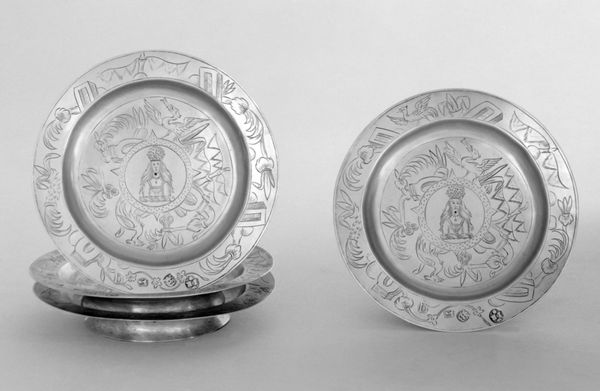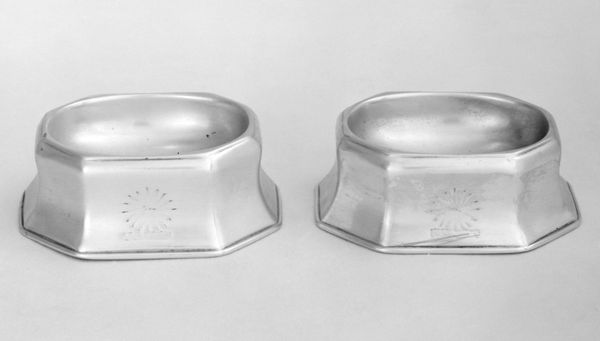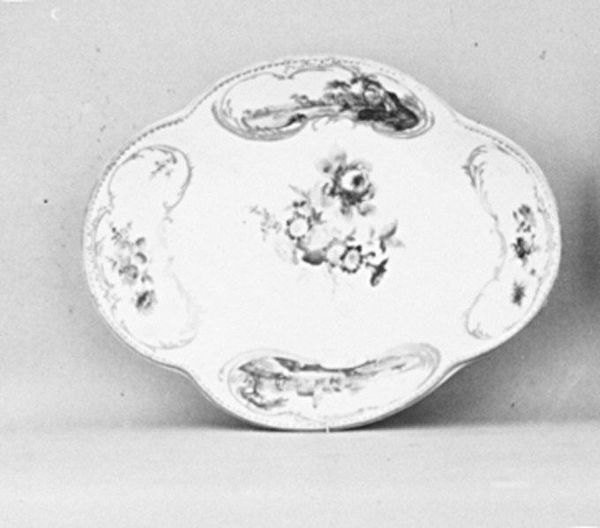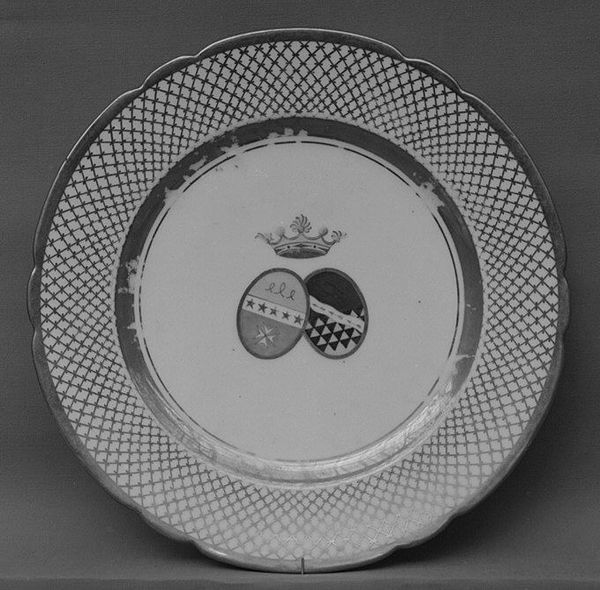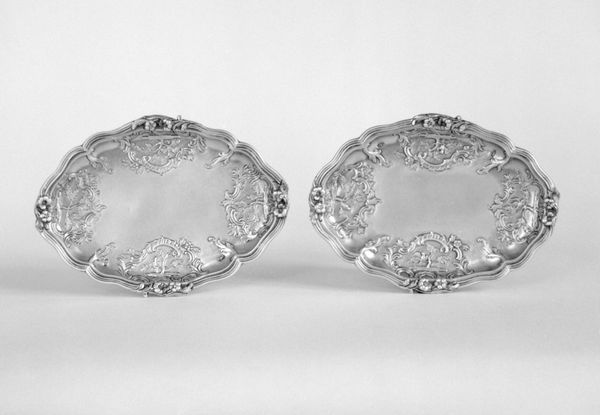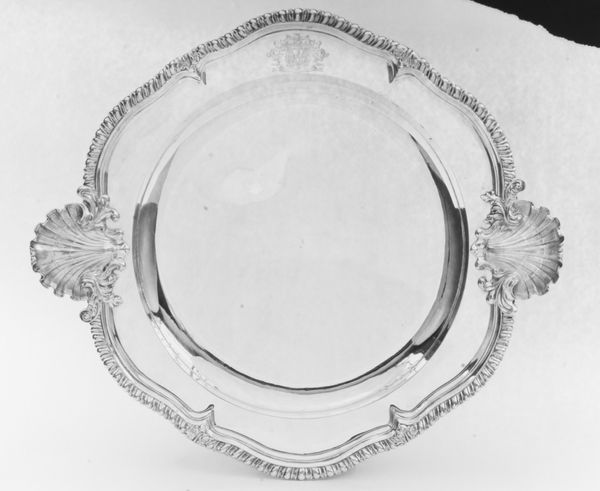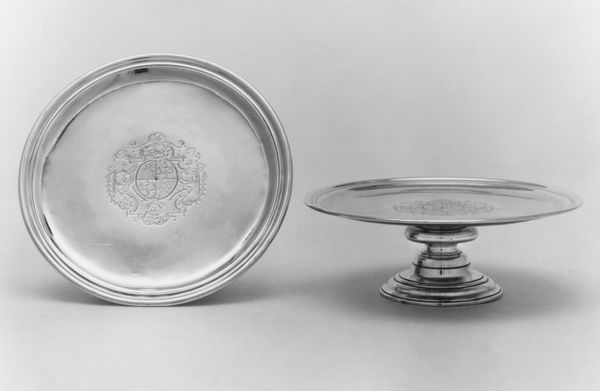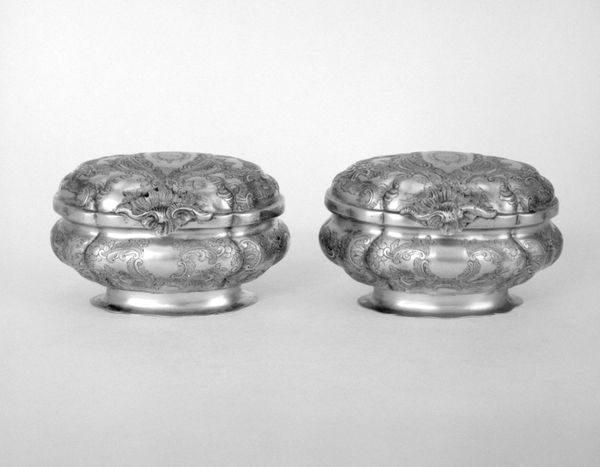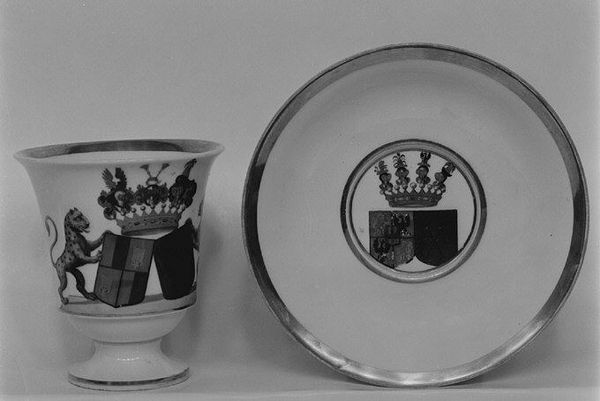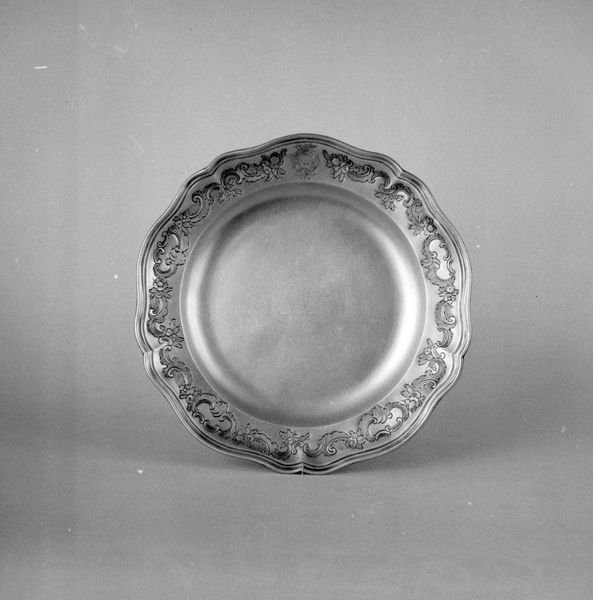
Saucer (one of two) (part of a traveling tea service) 1783 - 1793
0:00
0:00
Dimensions: 1 1/4 × 5 1/16 in. (3.2 × 12.9 cm)
Copyright: Public Domain
This porcelain saucer was produced by the French pottery manufactory Dihl et Guérhard. The process of making porcelain involved careful mixing of clay, shaping on a wheel, and firing at high temperatures to create a vitrified, translucent material. These techniques, refined over centuries, demanded immense skill and were highly valued. Its smoothness and pure white color gave it a luxurious feel. Decorated with delicate patterns and a monogram, it suggests a refined aesthetic taste. These attributes were often associated with wealth and status. The industrial revolution had a significant impact on porcelain production, enabling mass production, making porcelain more accessible to a wider audience. This saucer reflects the complex interplay between artistic skill, industrial production, and social aspiration. By considering the material, making, and context, we can understand the cultural significance of an object like this, bridging the gap between fine art and craft.
Comments
No comments
Be the first to comment and join the conversation on the ultimate creative platform.
